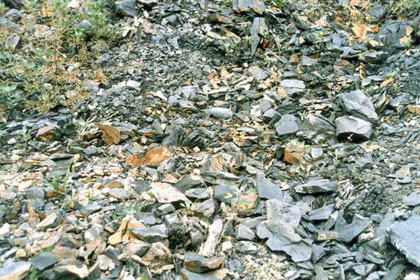Ecological Tour
Daedeoksan Mountain and Geumdaebong Peak Wild Flower Field

Inquiry
Taebaeksan Mountain National Park 033-550-0000
Location
Samsu-dong (4.20㎢), Taebaek-si (48 lots in addition to San 1-1, Changjuk-dong, Taebaek-si)
Introduction
This field is like a heavenly flower garden in spring.
The Ministry of Environment conducted a comprehensive natural resources survey over 2 years by forming a survey group of professional scholars before designating it as the protective area in 1993. The Ministry of Environment used the name Daeseongsan Mountain after Daeseong Elementary School in Gohan instead of Geumdaebong Peak at first, but the local residents complained that there was no mountain around this area called Daeseongsan Mountain and the name was changed from Daeseongsan Mountain to Geumdaebong Peak.
During the survey, 15 kinds of Korean Endemic Species, 16 kinds of rare plants were growing and Natural Monument such as birds including Northern Goshawk, Eurasian Sparrowhawk, and Golden Eagle were found. The habitats of lizards were found in Dumundong Valley of Gohan, Korean salamanders in Hansori Valley, and Korean clawed salamanders in Changjuk Valley. 13 species of insects that were not recorded in Korea were also discovered.
Fossils of Early Paleozoic Periods

Inquiry
Taebaek Tourism and Culture Department 033)550-2083
Location
San 42-2, Jangseong-dong, Taebaek-si
Introduction
The lower ordovician fossils in Jangseong, Taebaek is a repository of trilobites known as a sea creature in Korea from the Ordovician period (approximately 500 million – 440 million years ago). There are also a variety of other fossils including Brachiopoda, Cephalopoda, and Gastropoda.
Most of trilobites are estimated to have inhabited in a shallow sea, and they are the representative fossils from the Paleozoic period that existed for over 350 million years.
This place was designated as Gangwon-do Local Monument 57 on November 19, 1986 and has been protected. It was promoted as the State-designated National Monument with the possible fossil distribution region on April 24, 2000. The lower ordovician fossils in Jangseong, Taebaek is the rock formation representing the jigunsan formation among the Joseon Supergroup from the Ordovician period (approximately 500 million – 440 million years ago). Various fossils such as Brachiopoda, Cephalopoda, and Gastropoda along with trilobites that prove the formation of the early Paleozoic period are discovered from here.
The Cambrian period can be classified into about 30 different periods based on the survival time of trilobites known as the arthropods that appeared in earth firstly. After studying the trilobite fossils from here, Korea used to be located around the equator 500 million years ago instead of 38 degrees north latitude as now. The lower ordovician fossils in Jangseong, Taebaek is protected as the National Monument as they are the important fossils with high academic values to find out about the history of Earth from the Paleozoic period and the natural history of the Korean Peninsula.
Taebaek Ecosystem

Inquiry
Taebaek Environment Conservation Department 033-550-2061
Location
The whole district of Taebaek
Introduction
Animals
Golden eagle, Korean clawed salamander, lizard, eurasian sparrowhawk, goshawk, short-tailed viper snake, Korean salamander, and toad
Plants
Acer mono, Geumgang violet, Iris odaesanensis Y. Lee, Korean maple, Anagallidium dichotomum (L.) Griseb., Fraxinus mandshurica, Asian black birch, ash tree, Seoul saussurea, oak tree, needle fir, Taebaek stonecrop, Taebaek violet, and leontice microrhyncha
